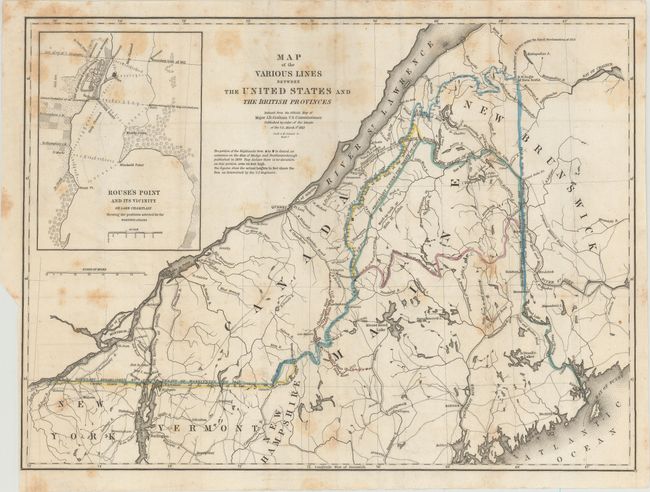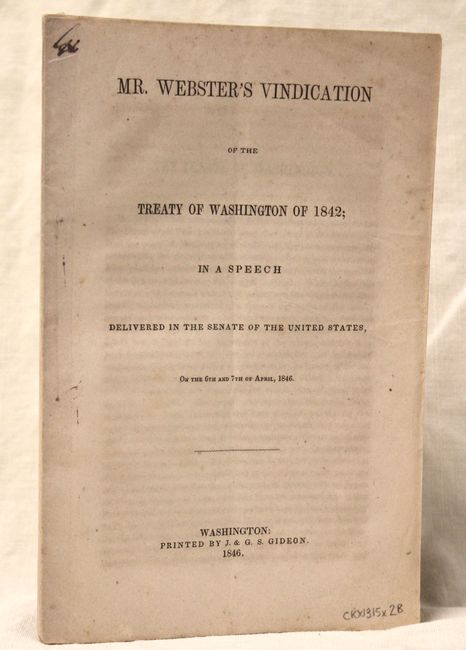Catalog Archive


Auction 148, Lot 132
"[Map with Report] Map of the Various Lines between the United States and the British Provinces", Graham, James D.
Subject: Eastern United States & Canada
Period: 1846 (dated)
Publication: Mr. Webster's Vindication of the Treaty of Washington in 1842…
Color: Hand Color
Size:
15.5 x 11.8 inches
39.4 x 30 cm
Download High Resolution Image
(or just click on image to launch the Zoom viewer)
(or just click on image to launch the Zoom viewer)

